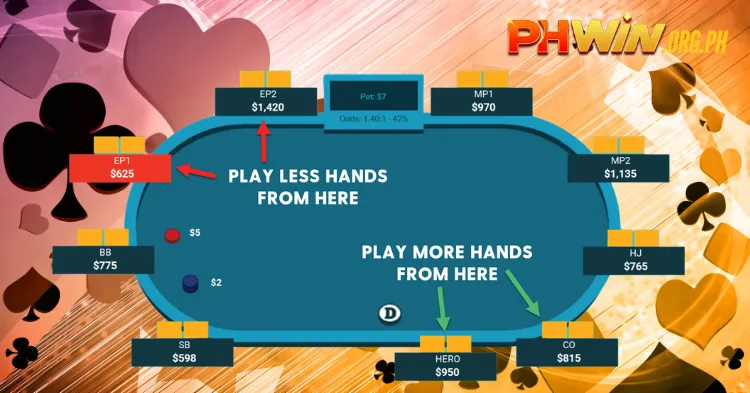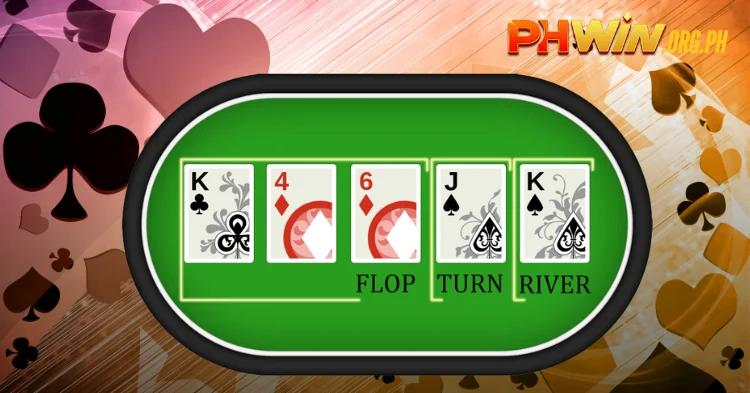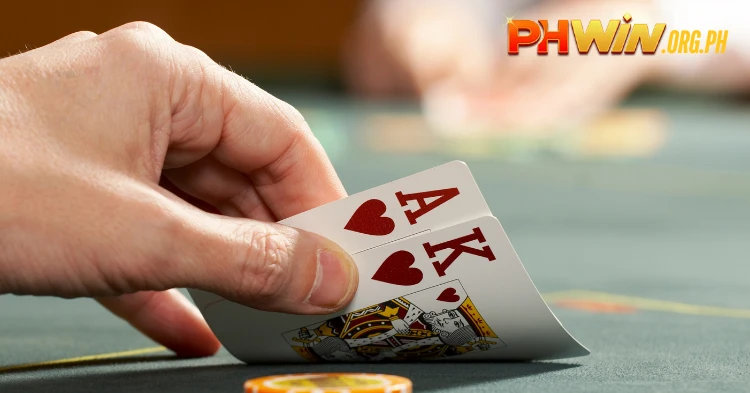Poker is one of those challenging yet stimulating games that require skill, strategy, and a touch of luck. Whether one is starting or a well-seasoned player, mastery of the Poker rules at Phwin will help. Now, let’s go into some basic rules and game mechanics at Phwin.
Why is understanding the poker rules at Phwin important?
By fully understanding the rules of Phwin poker, you can:
- Avoid unnecessary mistakes.
- Make more precise decisions in every hand.
- Increase your winning chances and reduce your losses.
- Have more confidence when playing among friends or at professional tables.
Besides, it helps you keep honest, as when you play by the rules yourself, you can also monitor others and notice a cheating opponent to protect your interests.

Poker Rules at Phwin: Key Guidelines You Must Know
Poker is an intellectual game that really asks for courtesy and morality. Familiarization with the rules provides a healthy and enjoyable playing environment for everyone.
Poker rules at Phwin – How Cards Are Dealt
Poker is played using a standard deck of 52 cards, not including Jokers. The dealer is required to shuffle the deck thoroughly before dealing. Cards can either be shuffled once or multiple times depending on the players’ agreement. After shuffling, the dealer does the following:
- Deal two private cards, called “hole cards”, to each player. Each player can see only his or her own cards.
- Place five community cards face down in the middle of the table. These are cards to be flipped during successive betting rounds.
- The cards are dealt clockwise, first to the player immediately to the left of the dealer.
Most variants of poker have hole cards, either five or fewer or more. A good example is how Texas Hold’em and Omaha players start their games by being dealt two faces-down cards, their hole cards, while game participants in the 7-Card Stud games have three concealed and four revealed cards.
>> Read more: Winning Blackjack with Expert Techniques
Basic Game Play in Poker
Every poker hand goes through certain rounds of betting. Here’s a breakdown of the important stages:
Rounds 1-2: Pre-flop, Flop
Preflop
After the dealing of the hole cards, the first round of betting begins. The player to the left of the dealer has to make the “small blind,” which will be the initial bet. Then another player places the “big blind,” usually double the small blind.
The players act in turn in accordance with their hole cards, determining their next move. They can:
- Fold: Give up their hand and leave the round.
- Call: Match the current bet.
- Raise: To increase the bet amount.
In this case, the player with the big blind wins the hand provided the rest of the players fold without showing his cards.

Flop
After the round of preflop betting, the dealer discards the first three community cards, known as the Flop. Now, players use their hole cards to make the best five-card hand possible along with the community cards.
Another round of betting begins, starting with the player to the left of the big blind. A player can now:
- Fold: Exit the round.
- Check: Pass the action without betting to the next player.
- Call: Match the current bet.
Raise: To increase the amount of a bet. Bet carefully at this stage since there are still unrevealed community cards that might turn the course of the game.
Rounds 3-4: The Turn and the River
Turn
In the third round, the fourth community card is revealed. At this point, there are four community cards on the table along with your two private cards. This provides additional data to evaluate whether you should continue or fold your hand.
Players begin a new betting round, proceeding from left to right. The minimum bet must match the largest bet from the previous round. Pay close attention to your opponents’ playstyle and betting amounts to adjust your strategy accordingly.

River
Fourth Round, the fifth and last community card is dealt, completing the five cards on the table. This card is called the River, the last determining factor in the hand. Now, with a total of seven cards, five community cards, and two private ones, each player can make his best five-card combination.
The game begins with a round of betting, starting to the left of the dealer. You should know well enough whether you can raise a bet or fold at this point because it seems hopeless to win the pot. Remember never to be afraid of folding an apparently promising hand in order to save chips for future rounds.
Round 5: Showdown
If two or more players remain after the River betting round, they proceed to the Showdown, where the winner is determined. Starting with the player who placed the last bet or raised the most during the previous round, players reveal their hole cards clockwise.

The player with the strongest five-card hand wins the entire pot. If multiple players have identical top hands, they split the winnings equally. The ranking of poker hands, from highest to lowest, is as follows:
- Royal Flush: Five consecutive cards of the same suit, from 10 to Ace. This is the strongest and rarest hand.
- Straight Flush: Five consecutive cards of the same suit, but not from 10 to Ace.
- Four of a Kind: Four cards of the same rank plus any other card.
- Full House: Three cards of one rank combined with a pair of another rank.
- Flush: Five cards of the same suit, not in sequence.
- Straight: Five consecutive cards of different suits. Note that the Ace (A) can act as the highest or lowest card.
- Three of a Kind: Three cards of the same rank plus two unrelated cards.
- Two Pair: Two pairs of cards of different ranks and one unrelated card.
- One Pair: A single pair of cards plus three unrelated cards.
- High Card: Five cards that do not form any of the above combinations, with the highest card determining the hand’s strength.
>> Read more: Pok Deng: A Unique and Exciting Card Game
Mastering Basics Poker rules at Phwin
To play poker effectively, it’s crucial not only to understand the basic rules but also to keep in mind these important principles:
Poker rules at Phwin – Hand Combinations
- A higher-ranked combination always beats a lower one (e.g., three 8s beat three 5s, and an Ace-high Flush beats a King-high Flush).
- If two players have identical hands, the winner is determined by the kicker, the highest unmatched card.
- For a Full House, the rank of the three cards determines the winner. If tied, the pair is compared.
- For Two Pair, the higher pair is compared first, followed by the lower pair, and finally, the kicker.
- The Ace (A) is the highest card in a Straight (e.g., A2345) or in a High Card hand.
Understanding these combinations helps you assess your hand and your opponent’s potential hand, allowing you to make informed decisions.
Player Actions in a Betting Round
Depending on your position, hand strength, and the flow of the game, you can choose from five actions:
- Fold: Withdraw from the hand, forfeiting any chips already bet but preserving the remainder of your stack.
- Check: Stay in the hand without betting more. This is only possible if no one has bet before you in the round.
- Call: Match the current highest bet to continue playing.
- Raise: Increase the current bet. The minimum raise is usually equal to the small blind.
- All-In: Bet all your remaining chips. Other players must match your total bet or also go all-in to compete for the full pot.
Your gameplay should adapt based on the situation. Consider your chip count, hand strength, position, and opponents’ tendencies before deciding. Don’t be afraid to fold when uncertain, and don’t overestimate your hand’s value. Proper bankroll management and discipline are key to long-term success in poker.
Conclusion
Poker is a simple yet complex game that requires both a strong grasp of the poker rules at Phwwin and adaptability in their application. Start by understanding and practicing the basic principles outlined here.
Consistent practice will sharpen your skills, helping you confidently participate in thrilling poker games and secure wins.
Wishing you fun and success at the poker table!

Established Phwin after spending 12 years in the online gaming sector, with a passion to provide authentic internet gaming experiences. With an intimate understanding of the industry, coupled with a focus on excellence, I have spent the last 7 years ensuring that all players at Phwin get to enjoy thrill, integrity, and authentic fun with each play.
Come to Phwin today to feel our commitment make your play all the better with like-minded players. We appreciate your loyalty and trust in Phwin Casino all these incredible years.

